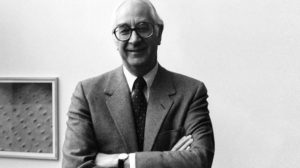What you do is a consequence of what you want to be. ~ Max DePree
 A month ago I wrote a post in tribute to Max DePree, former CEO of Herman Miller and author of several books including the classic Leadership is an Art. Last week I was with Max’s daughter. She talked about the many stories and memories that were shared about her father since his passing in early August. What stood out to her was the many ways in which people talked about his kindness. She said that he never set-out to be a businessman. He set out to be who he was as a person, and that he would frequently say to his children, “What you do is a consequence of what you want to be.”
A month ago I wrote a post in tribute to Max DePree, former CEO of Herman Miller and author of several books including the classic Leadership is an Art. Last week I was with Max’s daughter. She talked about the many stories and memories that were shared about her father since his passing in early August. What stood out to her was the many ways in which people talked about his kindness. She said that he never set-out to be a businessman. He set out to be who he was as a person, and that he would frequently say to his children, “What you do is a consequence of what you want to be.”
On the same day I was introduced to author David G. Benner’s book Presence and Encounter. Benner says, “We are lost in doing and tempted to believe that there is nothing more to us than this.”
This was followed by discovering this perspective from Chuck Swindoll. “Doing is usually connected with a vocation or career, how we make a living. Being is much deeper. It relates to character, who we are, and how we make a life. Doing is tied in closely with activity, accomplishments, and tangible things—like salary, prestige, involvements, roles, and trophies. Being, on the other hand, has more to do with intangibles, the kind of people we become down inside, much of which can’t be measured by objective yardsticks and impressive awards. But of the two, being will ultimately outdistance doing every time.”
When I think of leaders who I have enthusiastically followed, it has been because of their being not because of their doing. Benner describes a woman he met: “…the intensity and alignment of her being were disarmingly different from the sort of diluted presence I was used to in others and myself. Presence can be like that. When it is even relatively unclouded, it can shine with a brightness that can be disturbing.”
I think that’s what Max’s life, and leadership, reflected. The intensity and alignment of his being, his kindness shone so bright that it was disarmingly different.
Intensity and alignment of our being doesn’t happen overnight, at least not for most of us. Swindoll said, “It may take half a lifetime to perfect…but hands down, it’s far more valuable. And lasting. And inspiring.”
What we want to do is not nearly as important as what we want to be. ~Charles R. Swindoll
Leaders: What do you want to be?



